These sweet and succulent fruits are some of the most highly prized in the world, with their unique flavor and high sugar content. These are among the costliest fruits native to countries including Bangladesh, Indonesia, and the Philippines. Miyazaki mango is a tropical fruit that can be grown in many places, including your backyard.
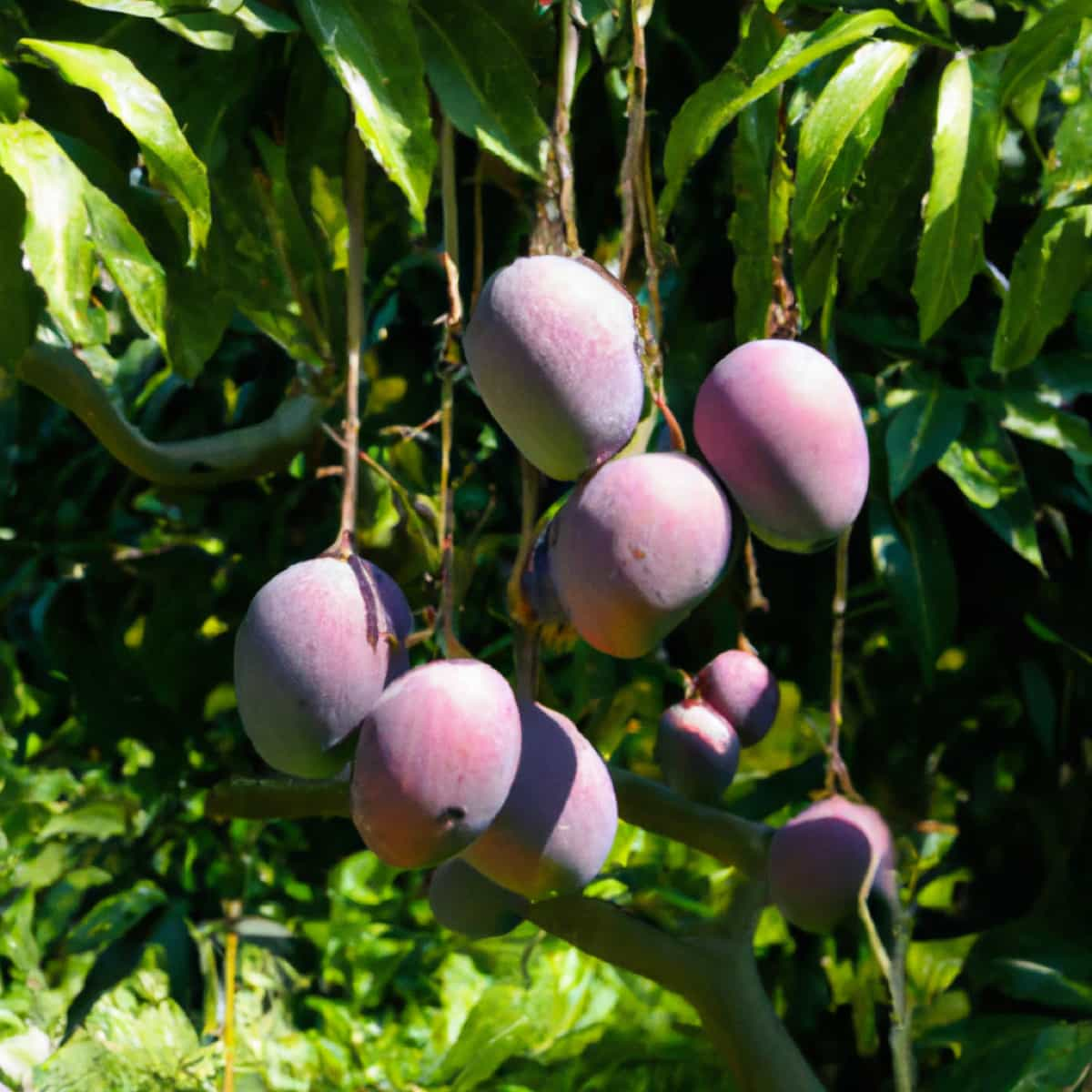
How to Grow Miyazaki Mango
Best Soil and Fertilizers for Miyazaki Mango Cultivation
The soil plays a crucial role in cultivating these precious fruits effectively. Opt for well-draining soil with slightly acidic to slightly alkaline pH levels ranging from 5.5 to 7.5. Moreover, adding organic matter like compost or manure improves the soil quality, enhancing tree growth. In addition to having the right pH level, organic matter should also be added to enhance the soil’s nutrient content and promote the tree’s healthy growth. Compost and aged manure are great options as they provide essential nutrients such as nitrogen and phosphorus that help develop strong roots.
Optimal Climate Conditions for Miyazaki Mangoes
Miyazaki mangoes require specific climate conditions to thrive and produce high-quality fruits. These mangoes are known for their sweet taste, juicy texture, and unique aroma. Farmers must ensure that the plants receive adequate sunlight, water, and nutrients to grow Miyazaki mangoes successfully. The optimal climate conditions for Miyazaki mango cultivation include warm weather with temperatures ranging from 25°C to 35°C at daytime and around 20°C at night.
This variety of mango also requires long hours of direct sunlight exposure to develop healthy foliage and fruit buds. In addition to heat and light requirements, Miyazaki mango trees need abundant rainfall or irrigation during the growing season. This crop’s ideal annual rainfall is between 1000mm-1500mm per year. Farmers should maintain proper ventilation levels within the orchard by not planting trees too closely together.
In case you missed it: Unlocking Prosperity: Mastering Mango Intercropping for Doubling Farmer’s Income
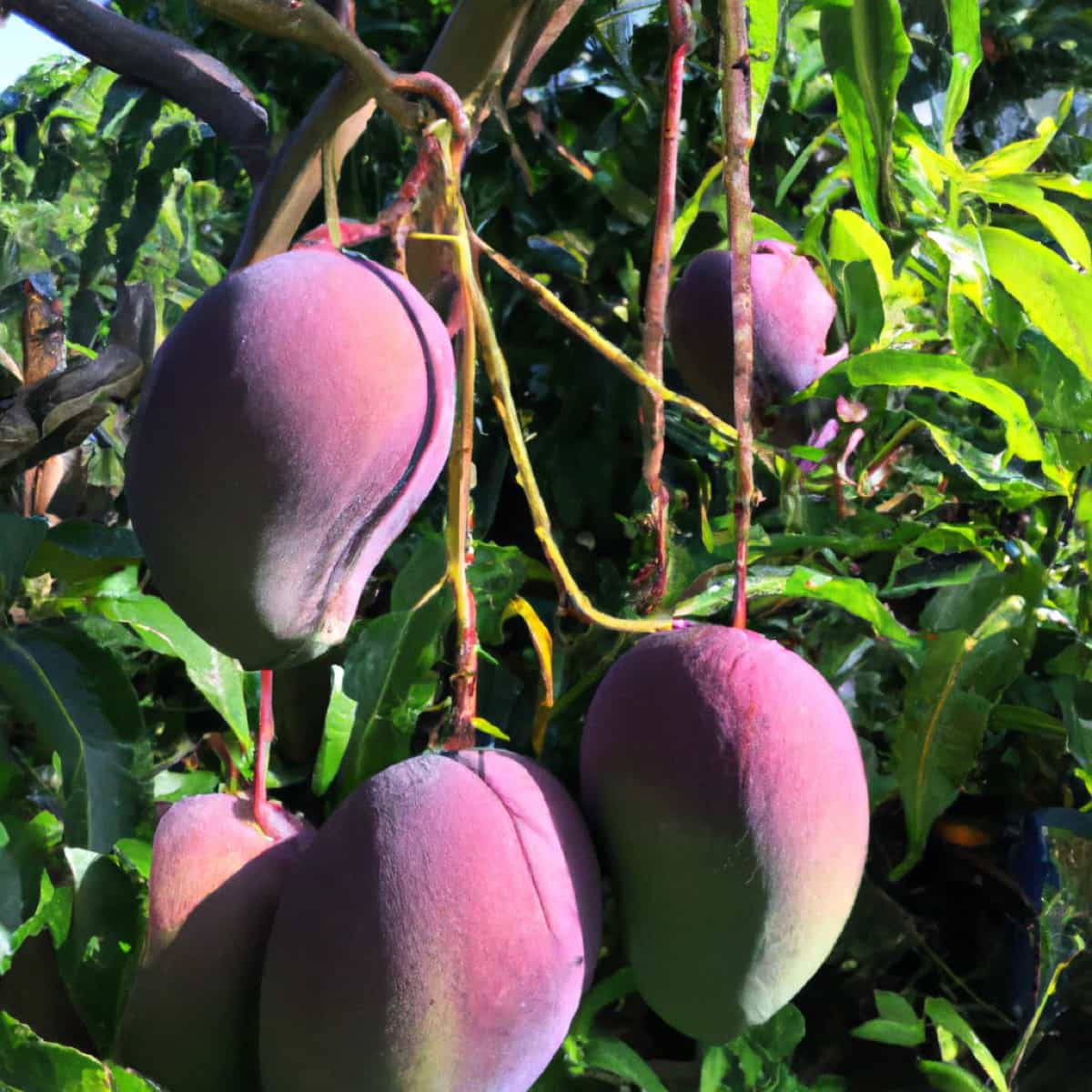
Tips for Improving Fruit Quality in Miyazaki Mangoes
- Make sure to water your trees regularly during flowering and fruiting seasons. Proper irrigation ensures that the mangos have enough moisture for healthy growth. However, excessive watering can cause root rot or other fungal infections.
- Thinning excess fruits from a tree will result in larger-sized and better-tasting fruit. This allows more nutrients into fewer fruits resulting in higher quality yields.
- Regular pruning helps balance the number of leaves vs. branches vs. fruits on each tree which helps increase yield as well as quality in terms of sweetness and juiciness.
- Providing adequate fertilizers at appropriate times supports robust leaf growth, which ultimately leads to healthy fruit production, making it important for farmers to know what micronutrients their soil needs before planting any crop.
- Lastly, maintaining the hygiene by removing dead or diseased parts of a tree immediately reduces the chances of pests invading, thereby ensuring healthier trees leading to delicious juicy mangos harvests.
Miyazaki Mango Grafting and Propagation Methods
- The cleft grafting technique is the most common method, where a scion from an existing Miyazaki mango tree is grafted onto a rootstock of another variety. This process helps maintain the genetic superiority of the Miyazaki mangoes.
- To ensure successful grafting, it’s important to select healthy scions and rootstocks that are of similar diameter. The best time to perform cleft grafting is during spring when temperatures are warmer, giving the plant enough time to recover before winter.
- Another popular propagation method for Miyazaki mangoes involves air layering, where a portion of a branch is stripped of its bark and wrapped in plastic or moss until roots form. Once established, this new plant can be separated from its parent tree and replanted elsewhere.
- With proper care and attention throughout their growth cycle, Miyazaki mango trees propagated using either method will produce premium-quality fruits consistently year after year.
In case you missed it: Key Rules to Get Rid of Fruit Fly in Mango: Symptoms, How to Treat, Management, Chemical, and Organic Control
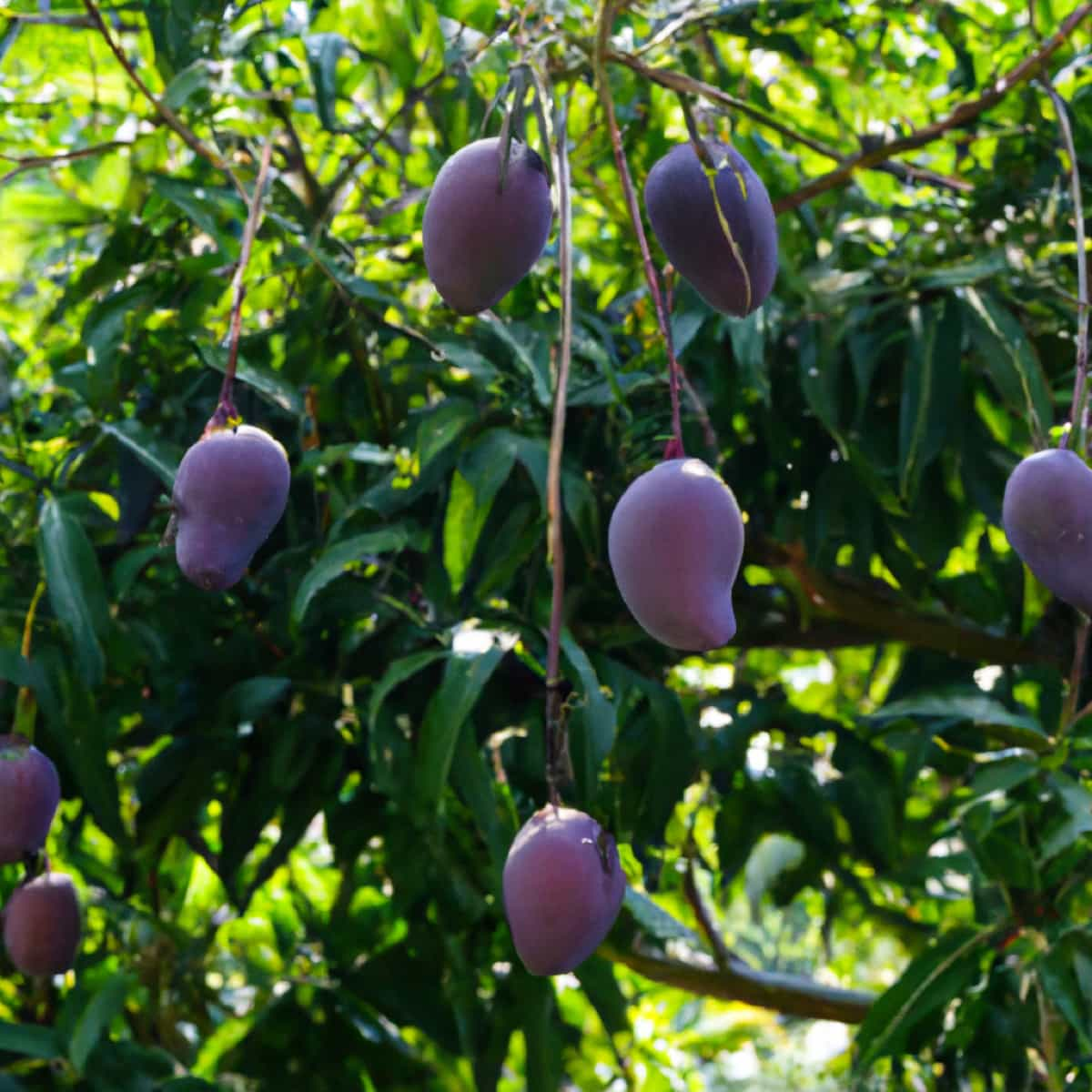
Ideal Planting Time for Miyazaki Mango Saplings
The ideal time to plant Miyazaki mango saplings is during the onset of the monsoon or rainy season, which typically falls around June or July. This timing is perfect as it provides enough moisture for the young plants to establish their roots and grow well.
Miyazaki Mango Varieties and Their Specific Care Requirements
Miyazaki mangoes are known for their exquisite taste and quality, making them the most sought-after fruits worldwide. The Miyazaki variety differs from others, such as the pelican mango, which is widely grown in Southeast Asia. The Japanese trade promotion center states that the Miyazaki mango is an “Irwin” mango. This means it has unique care requirements compared to other mangos.
Miyazaki Mango Tree Spacing and Orchard Layout
Tree spacing ensures healthy growth and maximum yield. It is recommended to space each tree about 10-15 meters apart for optimal growth conditions. It’s important to note that the orchard layout should also be considered. Trees should be planted in rows with enough space between them for easy access during maintenance activities such as pruning or harvesting.
Organic Practices for Miyazaki Mango Farming
- Organic farming practices are becoming increasingly popular in the agricultural industry. One of the primary methods used in organic farming is natural pest control. Farmers use beneficial insects like ladybugs and lacewings to eat harmful pests like aphids and mites. They also plant companion crops that attract pollinators and repel pests.
- Another method used in organic farming is composting. Composting helps improve soil structure, water retention, and overall plant health.
- Cover cropping is another technique used by organic Miyazaki mango farmers. Cover crops help manage weeds, prevent erosion, and provide additional nutrients to the soil when they decompose.
- Organic farmers commonly use crop rotation to maintain soil health and minimize disease buildup over time. Rather than planting the same crop year after year in a field or land area, different crops are rotated through each season or planting cycle.
In case you missed it: How to Start Alphonso Mango Farming in India: A Cultivation Guide to Planting to Harvesting
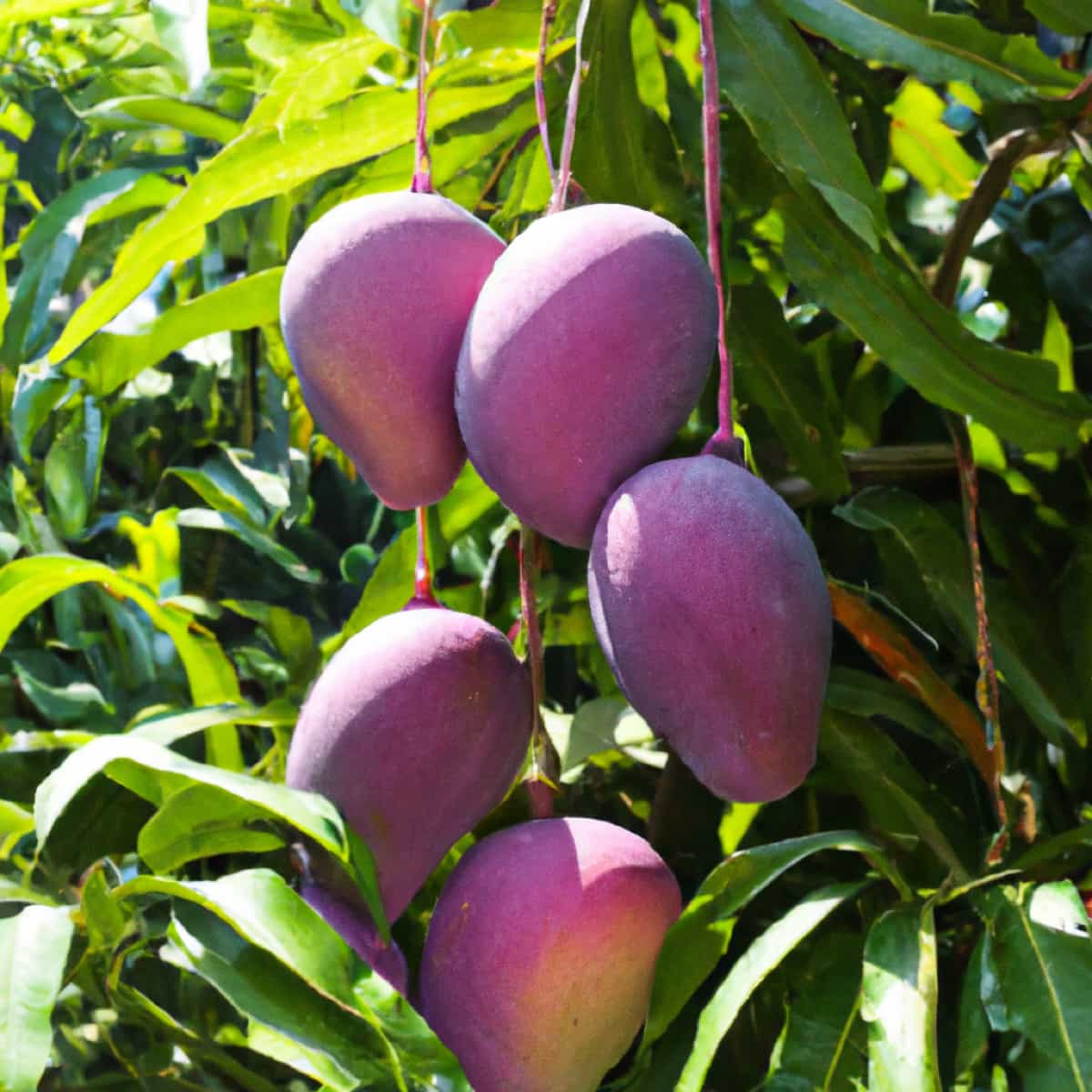
Miyazaki Mango Pollination and Attracting Pollinators
Pollination is an important process in the cultivation of Miyazaki mangoes. The flowers of this plant are hermaphroditic, meaning they have male and female reproductive organs. However, self-pollination is not sufficient for fruit set and yield maximization. Therefore, it is necessary to attract pollinators such as bees to the plantation. One way to attract pollinators is by creating a friendly habitat around the orchard.
This can be achieved by planting flowering plants like clovers and sunflowers that provide food sources for bees throughout their life cycle. Another effective method is pheromone traps to lure insects toward the trees during the blooming season. Ensuring adequate pollination through various methods can help increase yields of high-quality Miyazaki mango fruits with excellent flavor characteristics at harvest time.
Managing Weeds in a Miyazaki Mango Plantation
- Weeds compete with the trees for nutrients, water, and sunlight. They can serve as hosts to pests and diseases that can harm the mangoes. One effective way to manage weeds is through mulching.
- Mulch helps suppress weed growth by blocking out sunlight from reaching weed seeds. It also improves soil moisture retention, which benefits the mango trees. Organic materials like straw or leaves make excellent mulch options.
- Another way to control weeds is through manual removal using tools like hoes or hand-pulling techniques. This method works best for small areas where you can easily access all the weeds.
Preventing and Treating Fungal Diseases in Miyazaki Mangoes
- Fungal infections can significantly reduce the quality of the fruit, impacting its market value. One effective way to prevent fungal diseases is by maintaining good sanitation practices in the orchard. Regularly cleaning up plant debris, pruning infected branches, and removing weeds can help limit fungal growth.
- Another preventive measure is proper irrigation management. Overwatering can create ideal conditions for fungi to thrive. Therefore, it’s essential to water only when necessary and avoid wetting foliage during watering sessions.
Nutrient Deficiencies and Remedies for Miyazaki Mango Trees
- The most common nutrient deficiency for growing Miyazaki mangoes is a lack of nitrogen. Symptoms include stunted growth, yellowing leaves, and reduced fruit production. To remedy this, apply nitrogen-rich fertilizers such as urea or ammonium sulfate.
- Another common deficiency is a lack of phosphorus. This can lead to poor root development, reduced flowering, and smaller fruits. Adding bone meal to the soil can help replenish phosphorus levels.
- Potassium deficiency is also prevalent in Miyazaki mango trees and often results in weak branches, slow growth rate, small fruits with less sweetness than usual & premature fall off; It’s remedied by adding potassium sulfate or muriate of potash fertilizer around the tree’s drip line.
- Lastly, Magnesium deficiency shows signs on older leaves turning yellow between veins while its veins remain green, leading eventually to defoliation; Magnesium sulfate (Epsom salt) should be applied at 4-5 pounds per tree annually through fertigation or broadcasting evenly throughout the orchard floor.
In case you missed it: How to Start Kesar Mango Farming: A Cultivation Guide to Planting to Harvesting
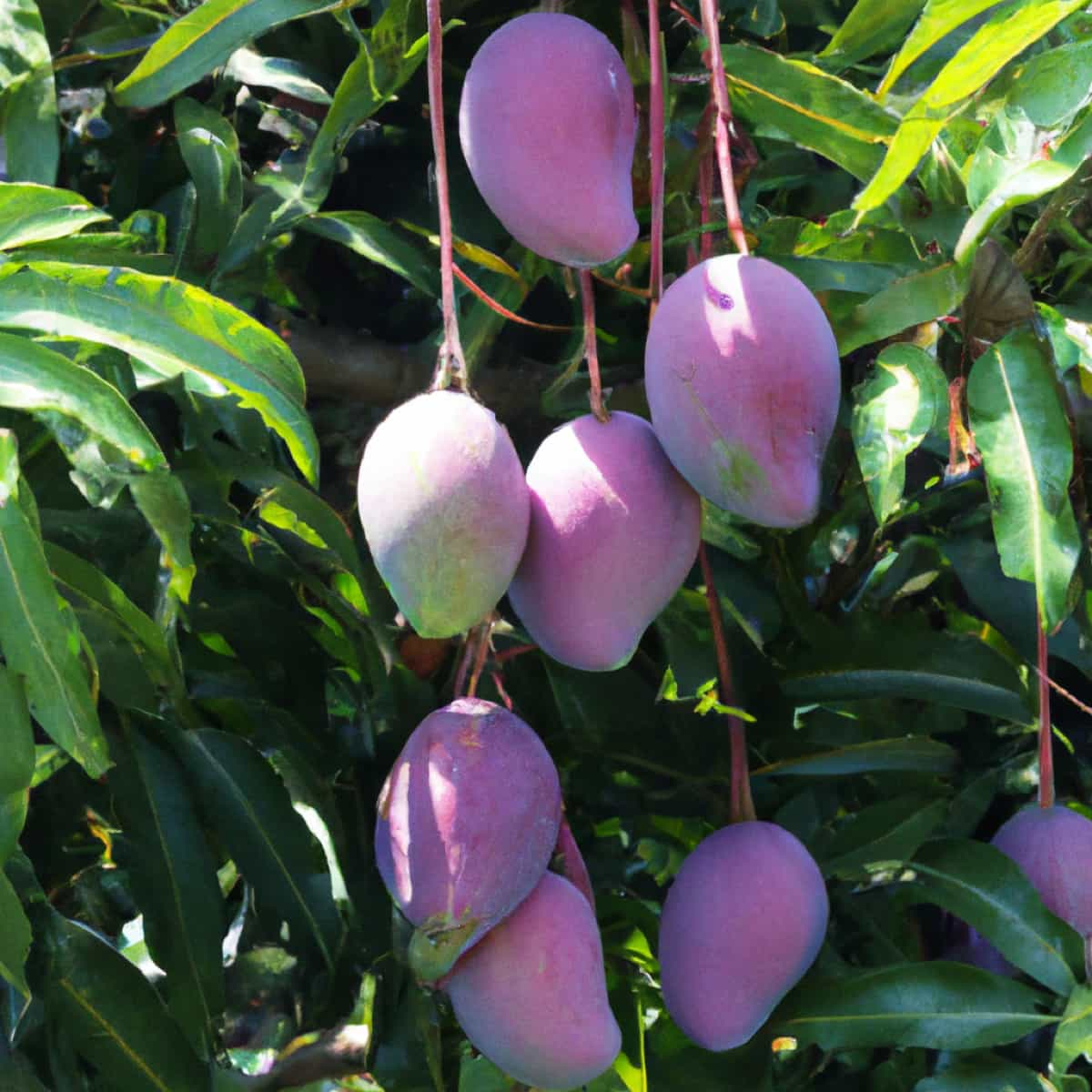
Miyazaki Mango Tree Maintenance During Different Seasons
- Proper care during different seasons is crucial to ensure your tree produces a bountiful harvest. During spring, apply a balanced fertilizer to promote healthy growth and flowering. Remove any dead or damaged branches and suckers that grow from the trunk base. Then this will reduce the risk of pests and diseases.
- Water your Miyazaki mango tree once or twice a week in summer, based on weather conditions. Mulch around the tree base to help retain moisture in the soil with your mango tree for nutrients.
- Stop fertilizing your Miyazaki mango trees during fall but continue watering them until they lose their leaves. Prune back any overgrown branches before winter sets in.
- In winter, protect young trees from frost by covering them with blankets or burlap sacks at night when temperatures drop below freezing point. Mature trees can withstand light frosts without protection.
Why is Miyazaki Mango So Expensive?
Miyazaki mangoes are considered one of the world’s most expensive fruits. They are so pricey because the fruits have high demand and limited supply. Miyazaki mango trees only bear fruit once a year, and their harvest lasts only two months. Another important factor contributing to the high price tag is their exceptional taste. Miyazaki mangoes have a rich, sweet flavor that can’t be found anywhere else. The unique combination of climate, soil, and growing techniques farmers use in Japan’s Miyazaki prefecture allows them to produce this highly prized fruit.
Pruning and Training Techniques for Miyazaki Mango Trees”
- Proper pruning helps remove dead or infected branches, improve tree structure, increase fruit production, and control the tree size.
- Always use clean and sharp cutting tools when pruning your Miyazaki mango trees. Cut off any damaged or diseased limbs first before proceeding further.
- The next step is to find the central leader branch of the tree, which will become its main trunk. Remove all other competing vertical branches that may interfere with its growth.
- Remember not to over-prune, leading to stunted growth or reduced fruit yields. Only prune what’s necessary based on your desired shape and overall plant health.
- Train your Miyazaki mango trees using trellises or stakes during their early years to promote proper upright growth patterns while protecting them against wind damage that could snap their tender stems.
Watering Schedule for Miyazaki Mango Plants
- During the growing season (spring-summer), water your Miyazaki mango tree deeply once a week, allowing the soil to dry out between watering sessions. Watering the tree in the early morning or late afternoon prevents excessive evaporation.
- In hot and dry climate conditions, you may need to increase your watering frequency, but always ensure proper drainage so that excess water doesn’t accumulate around your plant’s roots.
- During winter, when there are less daylight hours and cooler temperatures, reduce the amount of water you give your tree – only water it when the top about 1 to 2 inches of soil feels dry.
In case you missed it: Totapuri Mango Farming in India: A Complete Cultivation Guide to Planting to Harvesting
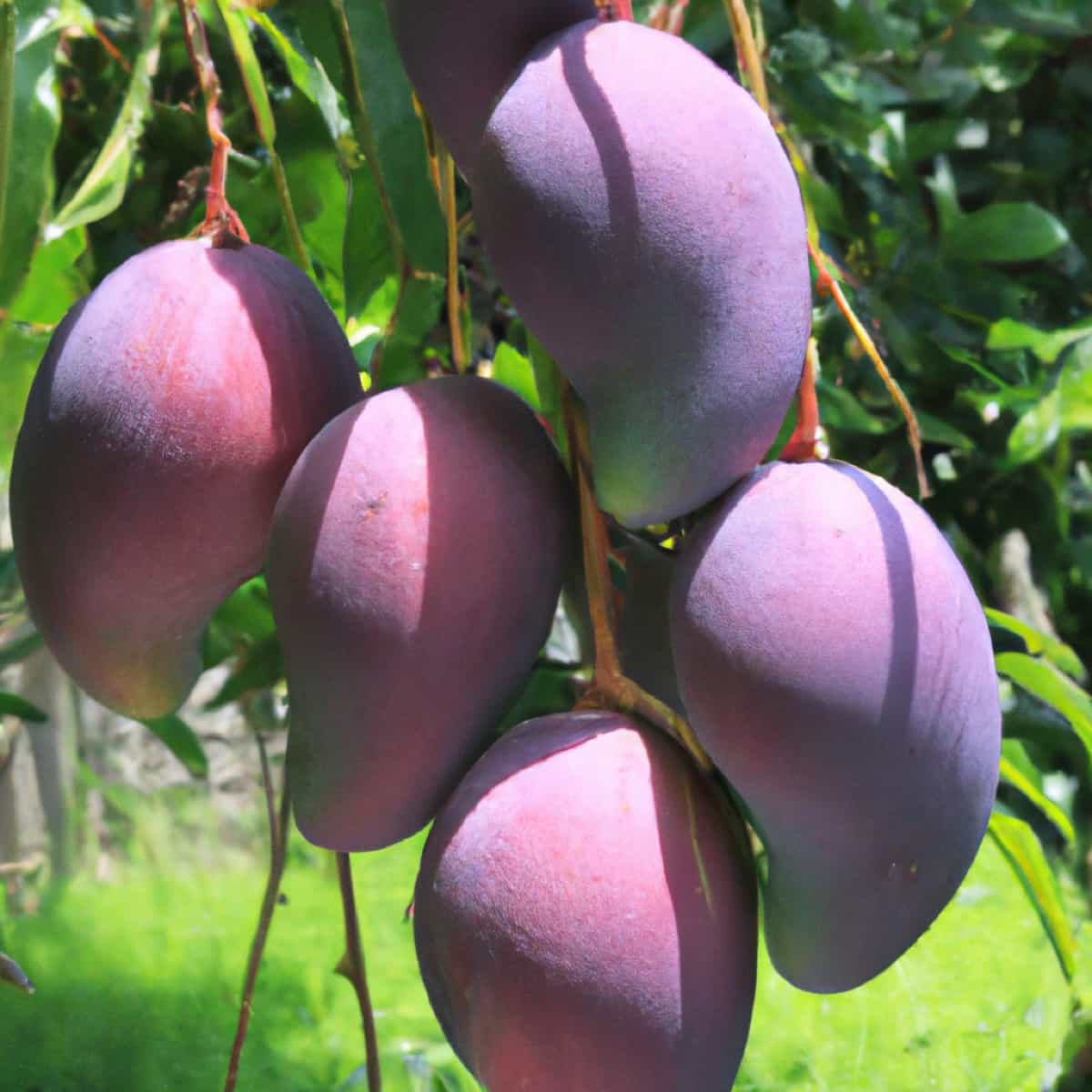
Preventing Pests and Diseases in Miyazaki Mango Orchards
- Miyazaki mango trees are susceptible to various pests and diseases affecting their growth, yield, and quality.
- The fruit fly problem is one of the most common pests for Miyazaki mango trees. These tiny insects lay eggs on the fruits, which then hatch into maggots that feed on the flesh of the mangoes. Use insecticides or traps for this pest to prevent fruit flies from infesting your orchard.
- Another major issue for Miyazaki mango growers is anthracnose disease. Regularly practice good sanitation by removing fallen leaves and debris to avoid anthracnose in your orchard.
- Other pests like mites, scales, aphids, and mealybugs may attack your plants if left unchecked. Regularly inspect your plant and use organic pest control measures such as neem oil if necessary.
Harvesting Signs and Techniques for Miyazaki Mangoes
- Harvesting Miyazaki mangoes may seem daunting, but it can be done successfully with the right techniques and knowledge. One of the first signs that your mango is ready for harvesting is its color. The fruit should have a golden yellow hue with a slight blush.
- Another way to check if your Miyazaki mango is ripe for picking is by gently squeezing it. If the fruit gives in slightly without being too soft, it’s ready to harvest.
- When harvesting your Miyazaki mangoes, use clean and sharp pruning shears or scissors to avoid damaging the tree or other fruits. Cut each fruit from its stem carefully and gently place them into baskets or crates.
The Price of Miyazaki Mango Per Kg in India
Miyazaki mangoes have been sold at Rs 2.70 lakh per kilogram in India.
Conclusion
Miyazaki mango tree maintenance is essential for growing healthy and delicious fruit. Growing your own Miyazaki mango tree not only allows you to enjoy the sweet, succulent fruit right from your backyard.
- Types of Pesticides Used in Agriculture: A Beginner’s Guide
- Economical Aquaculture: A Guide to Low-Budget Fish Farming
- 15 Common Planting Errors That Can Doom Your Fruit Trees
- How to Make Houseplants Bushy: Effective Tips and Ideas
- Innovative Strategies for Boosting Coconut Pollination and Yield
- Pollination Strategies for Maximum Pumpkin Yield
- The Complete Guide to Chicken Fattening: Strategies for Maximum Growth
- Natural Solutions for Tulip Problems: 100% Effective Remedies for Leaf and Bulb-Related Issues
- Revolutionizing Citrus Preservation: Towards a Healthier, Greener Future
- Natural Solutions for Peony Leaf and Flower Problems: 100% Effective Remedies
- Maximizing Profits with Avocado Contract Farming in India: A Comprehensive Guide
- Natural Solutions for Hydrangea Problems: 100% Effective Remedies for Leaf and Flowers
- The Ultimate Guide to Choosing the Perfect Foliage Friend: Bringing Life Indoors
- From Sunlight to Sustainability: 15 Ways to Use Solar Technology in Agriculture
- The Ultimate Guide to Dong Tao Chicken: Exploring from History to Raising
- The Eco-Friendly Makeover: How to Convert Your Unused Swimming Pool into a Fish Pond
- Mastering the Art of Delaware Chicken Farming: Essentials for Healthy Backyard Flocks
- 20 Best Homemade Fertilizers for Money Plant: DIY Recipes and Application Methods
- How to Craft a Comprehensive Free-Range Chicken Farming Business Plan
- Brighten Your Flock: Raising Easter Egger Chickens for Beauty and Bounty
- How to Optimize Your Poultry Egg Farm Business Plan with These Strategies
- Subsidy for Spirulina Cultivation: How Indian Government Schemes Encouraging Spirulina Farmers
- Ultimate Guide to Raising Dominique Chickens: Breeding, Feeding, Egg-Production, and Care
- Mastering the Art of Raising Jersey Giant Chickens: Care, Feeding, and More
- Ultimate Guide to Raising Legbar Chickens: Breeding, Farming Practices, Diet, Egg-Production
- How to Raise Welsummer Chickens: A Comprehensive Guide for Beginners
- How to Protect Indoor Plants in Winter: A Comprehensive Guide
- Ultimate Guide to Grow Bag Gardening: Tips, Tricks, and Planting Ideas for Urban Gardeners
- Guide to Lotus Cultivation: How to Propagate, Plant, Grow, Care, Cost, and Profit
- Agriculture Drone Subsidy Scheme: Government Kisan Subsidy, License, and How to Apply Online
- Ultimate Guide to Raising Araucana Chickens: Breed Profile, Farming Economics, Diet, and Care
- Bringing Hydroponics to Classroom: Importance, Benefits of Learning for School Students
- Ultimate Guide to Raising Polish Chickens: Breed Profile, Farming Economics, Diet, and Care
- Ultimate Guide to Raising Australorp Chickens: Profile, Farming Economics, Egg Production, Diet, and Care
- Silkie Chicken Farming: Raising Practices, Varieties, Egg Production, Diet, and Care
- Sussex Chicken Farming: Raising Practices, Varieties, Egg Production, Diet and Care
hi, i am interested to plant Miyazaki Mango Plant in Bangalore rural, but not able to find plant or the Seedling with the locals so where can i get it.